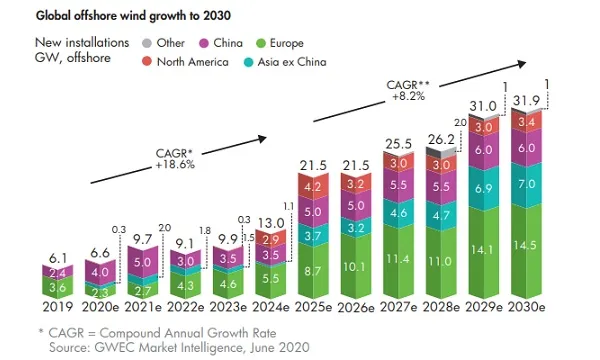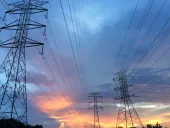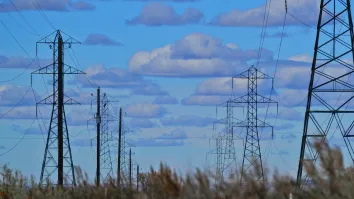
Asia to nearly double global offshore wind share by 2030
China’s dominance in the market might weaken as more countries ramp up capacity.
Asia’s share in the global offshore wind market is expected to grow from 24% in 2019 to 42% in 2025 and the rest of the decade, as more utility-scale projects get connected in Japan, South Korea and Vietnam, according to a report from the Global Wind Energy Council (GWEC).
China is still expected to continue dominating the Asian offshore wind market in the first half of this decade, with more than 70% share. It will be followed by Taiwan in terms of new installations in the same period.
However, the scales will tip from 2025, when more projects get connected in Japan, South Korea and Vietnam. GWEC projected that China’s market share in this region is likely to drop to 58% in 2025 and will continue to decline when offshore projects expand to new markets with high resource potential, like India and the Philippines, towards the end of the decade.
The average annual growth rate in Asia is expected to stay around 1.7% in the first half of this decade, but could accelerate to 8.4% in the second half. The top five markets in this region in new installations will be China (52GW), Taiwan (10.5GW), South Korea (7.9GW), Japan (7.4GW) and Vietnam (5.2GW).
“Excluding China, the Asian offshore wind market is still at the early stage of development. Each market is facing the challenge of developing a local supply chain and the necessary competencies and capabilities to build an offshore wind industry,” the report stated.
Globally, GWEC expects over 205GW of new offshore wind capacity additions over the next decade, with three-quarters to be installed in 2025-2030. With an average annual growth rate of 18.6% until 2024 and 8.2% up to the end of the decade, new annual installations are expected to sail past the milestones of 20GW by 2025 and 30GW by 2030.
“The global offshore wind market outlook to 2030 has grown more promising over the past year as governments raise their ambition levels and new countries join the market,” the report stated.
Europe is still expected to remain as the largest regional offshore wind market in terms of total installations by 2025 and 2030. However, new installations mainly from Asia and Nort America may likely surpass Europe in 2020.
“In the near-term (2020-2024), the majority of growth outside of Europe will primarily come from China and Taiwan, with the contribution from the US becoming sizable from 2024 when the first utility-scale offshore project comes online,” the report added.



















 Advertise
Advertise






